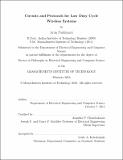| dc.contributor.advisor | Anantha P. Chandrakasan. | en_US |
| dc.contributor.author | Paidimarri, Arun | en_US |
| dc.contributor.other | Massachusetts Institute of Technology. Department of Electrical Engineering and Computer Science. | en_US |
| dc.date.accessioned | 2016-07-18T19:11:46Z | |
| dc.date.available | 2016-07-18T19:11:46Z | |
| dc.date.copyright | 2016 | en_US |
| dc.date.issued | 2016 | en_US |
| dc.identifier.uri | http://hdl.handle.net/1721.1/103674 | |
| dc.description | Thesis: Ph. D., Massachusetts Institute of Technology, Department of Electrical Engineering and Computer Science, 2016. | en_US |
| dc.description | This electronic version was submitted by the student author. The certified thesis is available in the Institute Archives and Special Collections. | en_US |
| dc.description | Cataloged from student-submitted PDF version of thesis. | en_US |
| dc.description | Includes bibliographical references (pages 191-200). | en_US |
| dc.description.abstract | IoT devices are helping improve efficiency and expanding capabilities in an increasing number of applications including industrial, home and personal fitness. Device lifetimes are still a concern, and improved energy efficiency is needed. Additionally, aggressive duty cycling is needed to operate these IoT devices in severely energy-constrained applications. Wireless communication, which consumes a large fraction of the power in these devices, is the primary focus of this thesis. We present circuit (active RF, leakage management and timing) and protocol (medium access and coding) techniques for total power minimization in low duty cycle systems. First, we present a Bluetooth Low Energy (BLE) transmitter optimized for low duty cycles. It maintains a high efficiency >40% while delivering +10dBm. At the same time, aggressive power gating brings the leakage down to <400pW, giving an on/off power ratio of 7.6 x 10⁷. Second, we look at protocols for low duty cycle wireless communication. The tradeoffs between network capacity and sensor node power consumption are considered and a fully asynchronous protocol is proposed. Additionally, we look at two coding techniques, Digital Network Coding (DNC) and Spinal coding, to enhance the intrinsic range of communication. Finally, for systems requiring accurate clocks, the standard is to use crystal oscillators. However, in order to reduce cost and board area, we propose a fully-integrated RC oscillator architecture that achieves high stability while maintaining low power. Overall, the techniques explored in this thesis aim to expand operation of IoT devices to ever more energy constrained situations and with increased lifetimes. | en_US |
| dc.description.statementofresponsibility | by Arun Paidimarri. | en_US |
| dc.format.extent | 200 pages | en_US |
| dc.language.iso | eng | en_US |
| dc.publisher | Massachusetts Institute of Technology | en_US |
| dc.rights | M.I.T. theses are protected by copyright. They may be viewed from this source for any purpose, but reproduction or distribution in any format is prohibited without written permission. See provided URL for inquiries about permission. | en_US |
| dc.rights.uri | http://dspace.mit.edu/handle/1721.1/7582 | en_US |
| dc.subject | Electrical Engineering and Computer Science. | en_US |
| dc.title | Circuits and protocols for low duty cycle wireless systems | en_US |
| dc.type | Thesis | en_US |
| dc.description.degree | Ph. D. | en_US |
| dc.contributor.department | Massachusetts Institute of Technology. Department of Electrical Engineering and Computer Science | |
| dc.identifier.oclc | 953525307 | en_US |
